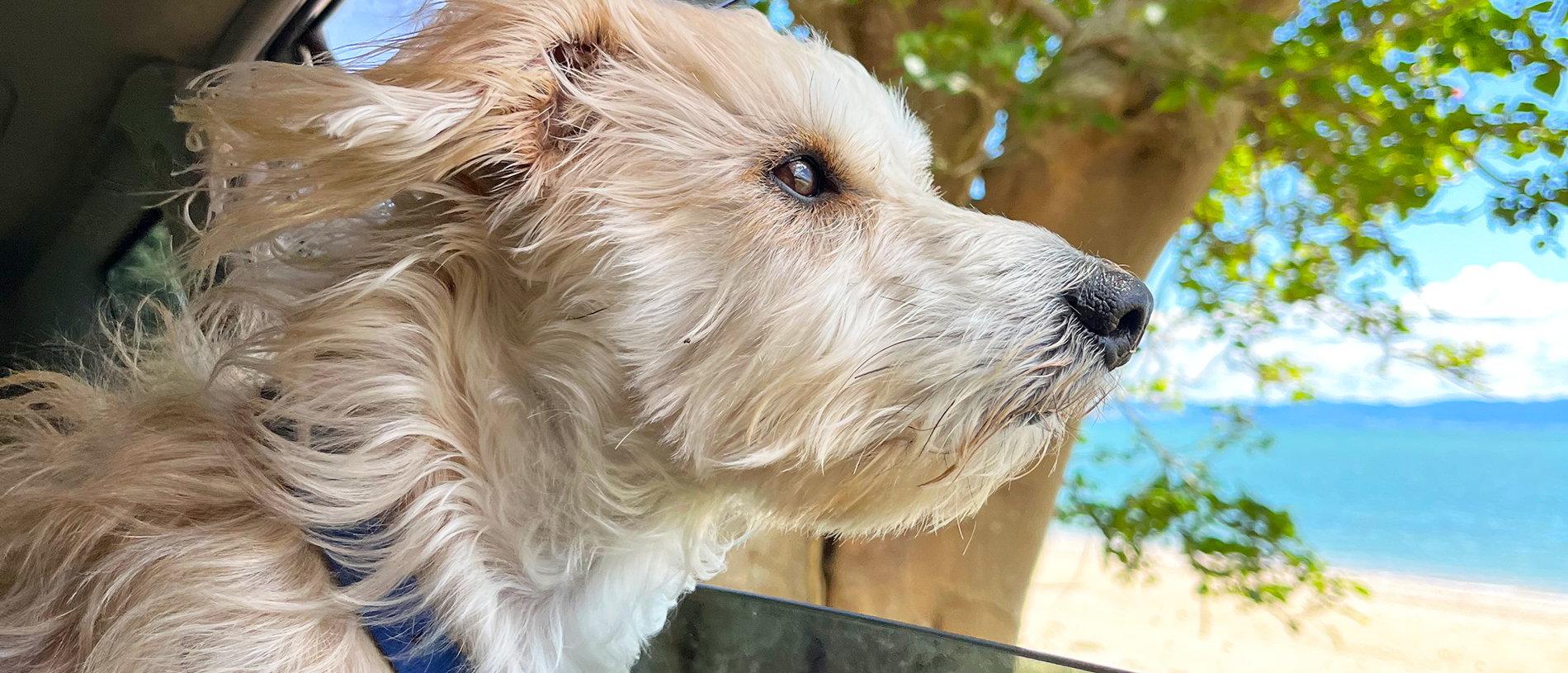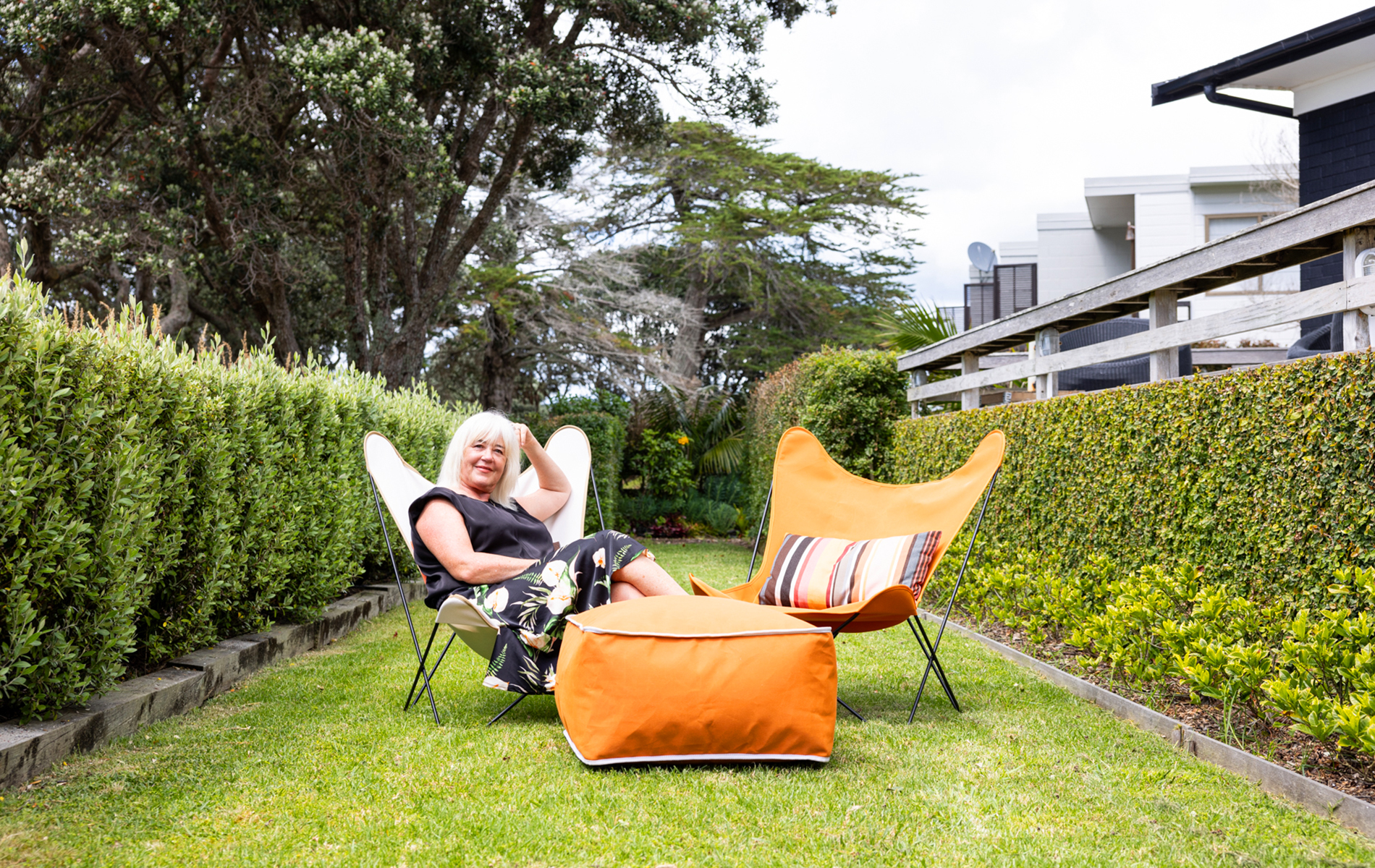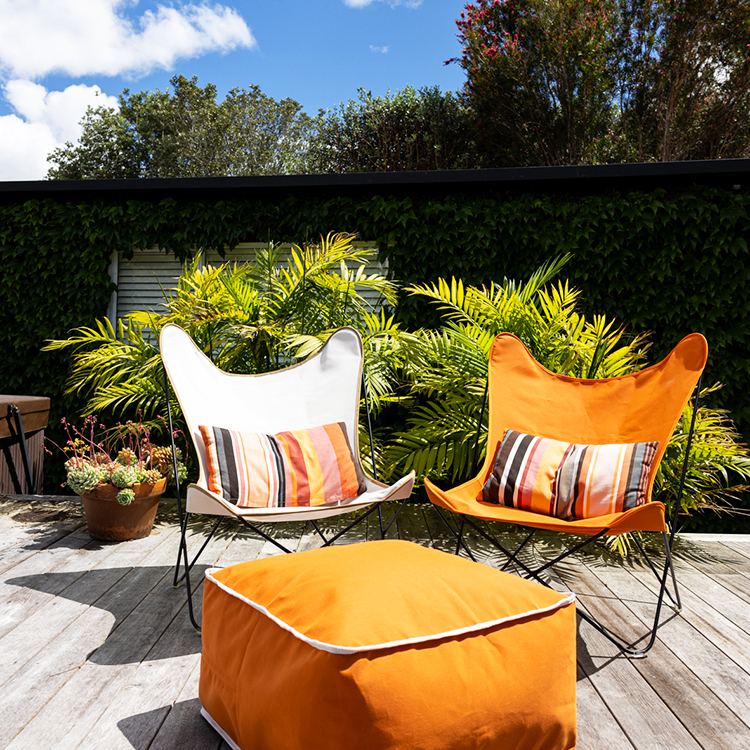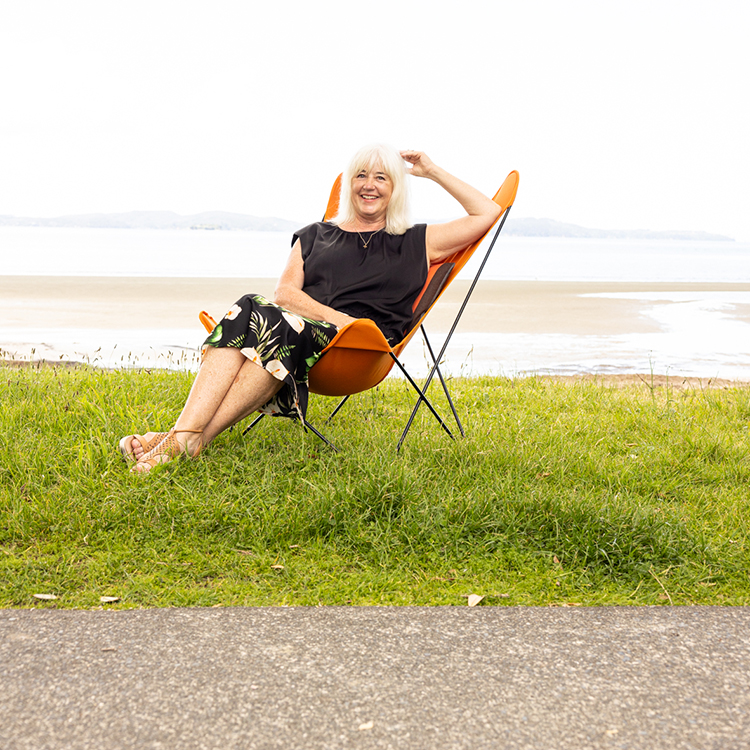
A dog-friendly Coromandel road trip
We discover the benefits and challenges of taking a dog on a Coromandel road trip.

With a career in interior design, Liz Kerby had always had an appreciation for mid-century aesthetics.
“My father was a builder and I grew up in mid-century style homes,” Liz says. “Our family also had a beach house in Pāuanui which Dad built in the 70s and there we had a couple of the classic mid-century butterfly chairs.”
The origins of the butterfly chair date back to Argentina in 1938 when three young architects, Antonio Bonet Castellana, Juan Kurchan and Jorge Ferrari Hardoy, came up with the initial design, calling it the BKF chair. Later, in the 1950s, John Chrichton, an English interior designer who immigrated to New Zealand, conceptualised a similar chair which he called the hammock or safari chair.

With a fabric or leather sling fitting onto a metal frame, butterfly chairs proved to be wildly popular around the world in the 1950s, and still are today.
“When the family bach was sold I got one of the butterfly chairs,” Liz continues. “But I didn’t like the colour of the cover and I also wanted a second one to go with it.”
Liz struggled to find any locally-made chairs, so began the journey of creating her own.
“This was during the GFC (Global Financial Crisis) and things had become quiet on the interior design front; I thought creating chairs would be a project to take me through the summer.

“I had an idea of dimensions and what I wanted the chair to look like, and then I worked with a metalworker to build the frame. The frames look simple but they’re quite complex to make. They’re a bit like a geodesic structure. It took a long time to get the right shape, the right materials and finishes and then to be able to reproduce them consistently.”
Today, Liz’s company Flutter Design has two types of butterfly chair – the Flutter Chair and the Vintage. “The two styles are linked, but they’re different shapes,” Liz explains. “The Flutter is based on the original BKF chair and is generous in shape, higher and more ergonomic. The Vintage chair is based on John Chrichton’s design.”
Alongside the frames, much of Liz’s work involves creating new covers for existing butterfly chairs. “The frames will last indefinitely, which is why a lot of people have still got old frames that might have belonged to their grandparents,” she says.
“Back in the 50s the chairs had cotton canvas covers. The frames survived, but the covers mostly rotted away. Over the years I’ve made hundreds and hundreds of replacement covers for old frames, which has been great. When people bring the frames in they’ve always got stories and memories associated with the chairs. Sometimes they’ve rediscovered the frames at the bach or in the back of a grandparents’ garage. There’s a lot of sentimentality with butterfly chairs. People really relate to them.”
Today, rather than cotton covers, Liz makes Flutter covers from durable, marine-grade, UV-resistant acrylic canvas. “It’s the only fabric that would survive in a New Zealand outdoor environment,” she explains.
“What I’ve been able to make is a cover that’s really durable and will last a long time. I wanted to be able to offer a wide variety of fabric colour options, too. Not just black, white or grey. I vary the range depending on trends and what’s popular, and everything is made to order here in Auckland.”

While the Flutter Design chairs are deceptively simple, they’re also very strong because they’re made of steel. “Like the originals from the 50s, the chairs can really become inter-generational, like a family heirloom,” Liz says. “They’re not a throwaway item.”
In addition to the butterfly chairs, Liz has also created a range of supplementary ottomans.
“I introduced the ottomans quite early on. They’re a natural extension of the chairs, really,” Liz says. “A butterfly chair is more like an armchair than a dining chair, the position is quite relaxed. So I thought it would be good to have something to put your feet up on. The ottomans turn the chair into a bit of a recliner.
“Plus, ottomans are just the best!” Liz laughs. “You can use them as a foot stool, a side table, a pet bed – I have them in numerous locations around my house and my animals all sleep on them. They’re really versatile.”
This story is from the Summer 2023 issue of AA Directions magazine.